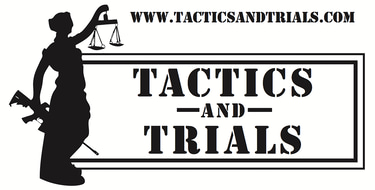The Million Dollar Mistake: Why Misjudging Resistance Can End Your Career
In law enforcement, the line between passive and active resistance isn’t just tactical—it’s legal. Misinterpreting that line can cost you your certification, your reputation, or even millions in a courtroom.
7/28/20251 min read
One gesture. One misread. One decision under pressure—and suddenly, you’re facing a lawsuit with your badge and career on the line.
Every police officer is trained to assess a subject’s level of resistance. But what if that assessment is wrong? That razor-thin distinction between passive and active resistance isn’t just an academic debate—it’s a legal trigger, especially when use of force is involved.
Let’s be clear: officers don’t get to analyze video frame-by-frame in the field like a court does months later. But courts will dissect those frames—and your decision. The legal consequences of misjudging resistance can include internal discipline, loss of POST certification, civil lawsuits, and multi-million dollar settlements.
So what’s the difference?
Passive Resistance vs. Active Resistance
Passive Resistance is non-violent and non-compliant. Think:
Going limp
Sitting down and refusing to move
Ignoring lawful commands
There’s no aggression—just refusal. And courts often view this as not justifying high levels of force.
Active Resistance, on the other hand, includes:
Pulling away
Bracing against being handcuffed
Fleeing
Hiding hands
This physical defiance opens the door to escalated tactics—but even then, only if they’re objectively reasonable and proportional.
Why the Distinction Matters Legally
California Penal Code § 835a, and similar laws in other jurisdictions, dictate that force must be reasonable, necessary, and proportional. The 9th Circuit and other federal courts regularly reinforce that excessive force—even against an actively resisting subject—can still be unlawful if the force used isn’t properly scaled.
Recent cases illustrate the consequences:
Bryan v. MacPherson: A Taser used on a non-threatening subject was deemed excessive.
Yount v. City of Sacramento: Active resistance didn’t justify deadly force.
Bell v. Williams: Even if resistance existed earlier, force used after compliance was ruled excessive.
These aren’t just cautionary tales—they’re legal precedents.
Tactical Takeaway
Your real-time judgment has legal weight. POST training emphasizes scenario-based assessments for this reason. It’s not about hesitation—it’s about correct evaluation.
Understanding the four resistance categories defined by POST—Passive, Active, Assaultive, and Life-Threatening—isn’t just for the academy. It’s courtroom armor.
Final Word
Every contact could be reviewed. Every use of force could be challenged. And every misread could cost far more than you realize.
The line between lawful control and excessive force is razor-thin. Know where you stand—before you're on the stand.

